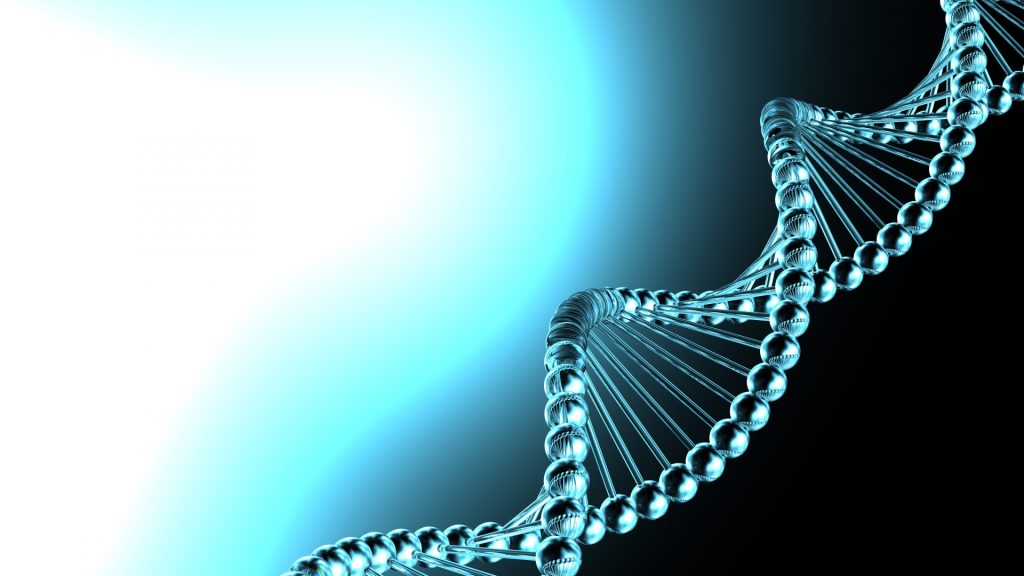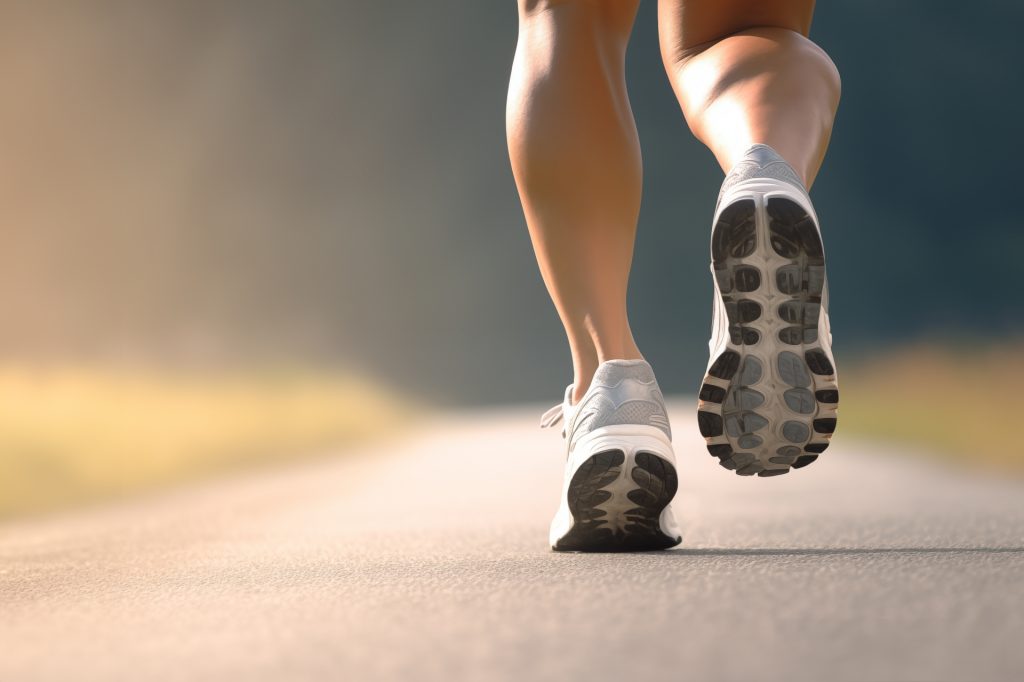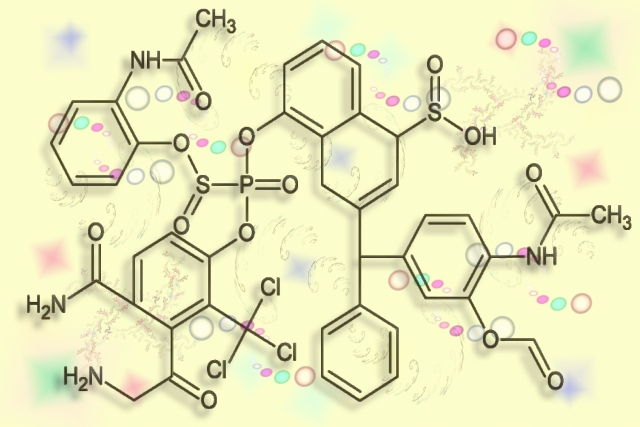
この記事の概要
スポーツ遺伝学は、遺伝子情報を活用して運動能力や身体特性を分析し、個人に最適なスポーツ選択やトレーニング方法を提案する分野です。遺伝子検査により筋力や持久力、柔軟性などの特性を把握するし、効率的なトレーニングや怪我のリスク軽減が可能です。ただし、環境軽減や生活習慣も考慮し、遺伝情報を総合的に活用することが重要です。
Introduction
In the world of sports, the extent to which genetics influence performance has been a subject of research for many years. In recent years, advances in genetic testing technology have led to efforts to analyze the genetic factors of individual athletes and derive appropriate training methods.
Sports genetics is a field that identifies genes related to athletic ability and studies how they affect performance. In particular, genetic testing can provide information such as “whether someone is suited to endurance,” “whether they have good explosive power,” or “whether they are at high risk of injury.”
This article provides a detailed explanation of the basics of sports genetics, the main genes, how genetic testing can be used, and its limitations and ethical issues.
The relationship between athletic ability and genetics
Genetic and environmental influences
Athletic ability is influenced by both genetic and environmental factors. Twin studies have shown that “approximately 50-70% of athletic ability is determined by genetics,” but the influence of the environment and training cannot be ignored.
For example, even if someone is genetically predisposed to have high endurance, they will not be able to perform well without the right training. On the other hand, even if someone has a genetic disadvantage, they can still become a great athlete if they put in the effort.
The difference between endurance and explosiveness
The influence of genes is particularly evident with regard to endurance and explosive power.
- In endurance sports (marathons, cycling, etc.)
, people who are genetically more efficient at using oxygen and who have a lot of slow-twitch muscle fibers (type I muscle fibers) have an advantage. - In explosive sports (sprinting, weightlifting, etc.),
people with a lot of fast-twitch muscle fibers (type II muscle fibers), which are more likely to exert explosive power, are considered to have an advantage.
Major genes related to athletic ability

Previous studies have identified several key genes associated with athletic performance.
ACTN3 gene (alpha actinin 3)
The ACTN3 gene is known to be involved in fast-twitch muscle fibers (type II muscle fibers) and to affect explosive power.
- RR type/RX type : High explosive power, suitable for short distance running and weightlifting.
- XX type : Excellent endurance, suitable for marathons and long-distance competitions.
ACE gene (angiotensin-converting enzyme)
The ACE gene is involved in vasoconstriction and blood pressure regulation and is associated with endurance.
- Type I (insertion type) : High endurance, suitable for marathons and soccer.
- Type D (deficiency type) : Excellent explosive power, suitable for short distance running and power sports.
How to use genetic testing
By utilizing genetic testing, you can learn about your genetic characteristics and choose the training method that best suits you.
1. Personalized training plans
Based on the results of the genetic test, a training menu can be created that is suited to the individual’s muscle characteristics. For example, if you have XX ACTN3 gene, it would be more effective to incorporate a program that emphasizes endurance rather than explosive training.
2. Injury risk management
Some genes are also related to the strength of tendons and ligaments, providing clues for predicting injury risk: for example, the COL5A1 gene influences ligament strength, and people with certain mutations have been shown to be at higher risk of sprains and Achilles tendon ruptures.
3. Optimize your nutrition and recovery
It is known that people who are genetically slow to metabolize caffeine are less likely to benefit from the performance-enhancing effects of caffeine intake. There are also genetic individual differences in the efficiency of vitamin D absorption, so people who are prone to vitamin D deficiency need to consciously take it.
Limitations of genetic testing
Although genetic testing has many benefits, it also has some limitations.
- Athletic ability is not determined solely by genetics
environmental factors, training, and mental strength are also important factors. - Athletic ability cannot be determined by a single gene
It is believed that there are more than several hundred genes that are involved in athletic ability, so it is dangerous to make judgments based only on the influence of a single gene. - Research results vary from person to person
Even people with the same genotype will perform differently depending on their lifestyle and training methods.
Ethical issues in genetic testing

As genetic testing becomes more widespread, several ethical issues have also been raised.
- Risk of genetic discrimination
It is ethically questionable for companies and schools to hire or select people based on genetic information. - Possibility of psychological stress
If an athlete believes that they are not suited to this sport, their motivation may decrease. - Data Privacy
Genetic information is highly sensitive personal information and requires strict management to prevent it from being used inappropriately.
Examples of training using genetic testing
In recent years, professional athletes and sports science experts have been using genetic information to implement personalized optimization training. Here, we will explain in detail the specific training approach using genetic testing.
1. Optimizing training for sprinters
Sprinters need high explosive power, so the development of fast-twitch muscle fibers (type II muscle fibers) is important. Athletes with the RR or RX ACTN3 gene are more likely to have an abundance of fast-twitch muscle fibers, and can maximize their performance by focusing on weight training and plyometrics (training that involves explosive movements).
- Suggested training :
- Clean and Jerk, Snatch (Olympic Lifting)
- Box jumps, medicine ball throws
- High-Intensity Interval Training (HIIT)
On the other hand, if your ACTN3 gene is XX, it is difficult for fast-twitch muscle fibers to develop, so it is important to increase the amount of weight training you do to improve your maximum muscle strength and incorporate training to activate your nervous system.
2. Optimizing training for endurance athletes
In endurance sports such as long-distance running and triathlons, improving oxygen transport capacity is directly linked to performance. Athletes with type I ACE gene are more likely to have genetic characteristics suited to improving endurance, so it would be effective to focus on training to improve cardiopulmonary function.
- Suggested training :
- Low-intensity, long-term aerobic exercise (LSD training)
- High altitude training (to increase red blood cells)
- Interval training (improving lactate threshold)
Conversely, athletes with the D type of the ACE gene are well suited to improving muscle strength, so adding moderate strength training can help them balance endurance and power.
Genetic testing reveals sports aptitude and sport selection

Sports genetics is also being used as a tool to determine an individual’s athletic aptitude, and several studies have shown that certain genes are associated with aptitude for certain sports.
1. Genotypes for sprinting
- ACTN3 (RR type/RX type) : Sprinting, track and field (100m, 200m), weightlifting, American football
- ACE (D type) : Sports that require explosive power (soccer, rugby, sprint cycling)
2. Genotypes suitable for endurance sports
- ACTN3 (XX type) : Marathon, triathlon, long distance running
- ACE (Type I) : Endurance sports (cycling, swimming, cross-country skiing)
3. Genes involved in muscle strength and flexibility
- COL5A1 (ligament flexibility) : Related to yoga, gymnastics, and figure skating
- PPARGC1A (mitochondrial development) : Involved in endurance sports in general
Using this information can help you choose a sport that is genetically suited to you.
Social and ethical issues of genetic testing
1. Risk of misuse of genetic information
As genetic testing becomes more widespread, privacy issues are becoming a concern. For example, there are ethical concerns about companies and sports organizations using genetic testing as a criterion for hiring and selection.
- Concerns in the sports world:
- The risks of using players based on their genotype
- Potential for players deemed to have poor genetic suitability to be denied opportunities
Currently, many countries have guidelines stating that genetic information should not be used as a basis for discrimination.
2. Psychological effects
Knowing the results of a genetic test may affect the mental state of an athlete. For example, an athlete may lose confidence by believing that “because my ACTN3 gene is XX, I’m not suited to sprinting.”
Therefore, it is important to know how to utilize the results of genetic testing. It is important to understand that the influence of genes is only one factor, and that results can change depending on the environment and efforts.
3. Data Management and Privacy
Genetic information is highly personal data and requires strict management. If you are going to undergo testing, it is important to choose a trustworthy institution and check their data handling policy.
The future outlook for genetic testing

Research into sports genetics is progressing every day, and further improvements in accuracy are expected in the future.
1. Advances in gene editing technology
With the development of gene editing technologies such as CRISPR-Cas9, it is possible that in the future it may be possible to improve athletic performance by manipulating specific genes. However, there are many ethical issues, and careful discussion is required before this can be put into practical use.
2. AI-based genetic analysis
The use of AI will enable advanced analysis that combines genetic information and training data, which is expected to lead to further development of individually optimized training programs.
3. Gene x environment research
There is an increasing number of studies analyzing interactions between genes, environment, and lifestyle. For example, there is a need to clarify the effects of different diets and training environments on performance, even for athletes with the same genotype.
The relationship between genes and recovery
In sports, recovery is just as important as training. Research is also progressing on the effect of genes on recovery speed, and it has been found that the speed of fatigue recovery varies depending on certain genotypes.
1. IL-6 gene and inflammatory response
“IL-6 (Interleukin 6)” is a cytokine involved in inflammation and immune response and affects post-exercise recovery.
- IL-6 GG type : Has a strong inflammatory response and tends to prolong muscle damage after exercise.
- IL-6 GC type/CC type : Quickly suppresses inflammation and has high recovery ability.
People with IL-6 GG are advised to get plenty of rest after strenuous training, and proper nutrition and icing can promote recovery.
2. SOD2 gene and oxidative stress resistance
The “SOD2 (superoxide dismutase 2)” gene encodes an enzyme that removes reactive oxygen species. It plays a role in reducing the effects of exercise-induced oxidative stress.
- Type AA : High antioxidant capacity and quick recovery from fatigue.
- VV type : Vulnerable to oxidative stress and takes a long time to recover.
Athletes with type VV SOD2 can help recover from fatigue by actively consuming foods with high antioxidant properties (fruits and vegetables containing vitamins C and E).
3. CLOCK gene and sleep quality
The CLOCK gene is a gene involved in circadian rhythm (body clock) and is closely related to sleep quality.
- Genetically morning type (TT type) : You are good at going to bed early and getting up early, and morning training is most effective.
- Genetically nocturnal (CC type) : You tend to perform better at night, but are easily affected by lack of sleep.
For athletes, it is important to take into account their genetic body rhythms and set appropriate training times.
Genetics and the risk of sports injuries

Genetics also influences the risk of sports injuries, with certain gene mutations associated with an increased risk of ligament injuries and stress fractures.
1. COL1A1 and COL5A1 genes and ligament strength
The COL1A1 and COL5A1 genes are involved in collagen production, which determines the strength of ligaments and tendons.
- COL1A1 TT type, COL5A1 CC type : Strong ligaments, low risk of injury.
- COL1A1 GG type and COL5A1 TT type : Weak ligaments mean a high risk of anterior cruciate ligament (ACL) injury and Achilles tendon rupture.
People with weak ligaments are advised to warm up and stretch thoroughly, and incorporating training to improve joint stability can help prevent injury.
2. GDF5 gene and joint flexibility
The GDF5 (growth differentiation factor 5) gene is involved in the development of joints and ligaments.
- TT type : Flexible joints, suitable for yoga and gymnastics.
- CC type : Stiff joints and high risk of sprains and fractures.
People with GDF5 CC type can reduce the risk of injury by making stretching a habit to increase the range of motion of their joints.
Genes and diet/nutritional strategies
It is clear that nutrient absorption efficiency and metabolic ability differ depending on genotype. For athletes, creating a nutritional strategy based on genes directly leads to improved performance.
1. FTO gene and fat accumulation
“FTO (fat mass associated gene)” is a gene involved in the accumulation of body fat and affects the efficiency of energy consumption.
- Type AA : Fat accumulation is common, so a high-protein, low-fat diet is recommended.
- TT type : Good metabolism, less likely to gain weight even if carbohydrate intake is increased.
AA type FTO athletes should aim for a high protein diet while controlling their carbohydrate intake.
2. CYP1A2 gene and caffeine sensitivity
The CYP1A2 gene is involved in the metabolism of caffeine and determines how sensitive you are to the effects of caffeine.
- Type AA (rapid metabolizer) : More likely to experience the performance-enhancing effects of caffeine intake.
- Type AA (rapid metabolizer) : More likely to experience the performance-enhancing effects of caffeine intake.
People who are sensitive to the effects of caffeine should be careful about the amount they consume before a match.
3. LCT gene and lactose intolerance
The LCT (lactase) gene is responsible for the ability to digest lactose.
- Type CC (high risk of lactose intolerance) : People are prone to indigestion when consuming dairy products.
- TT type (easy to digest lactose) : Can consume dairy products without problems.
If you are lactose intolerant, choose plant-based proteins (such as soy or almond milk) instead of dairy products.
Developments in genetic testing and future possibilities

As genetic research continues to evolve, it is likely that more personalized training and nutrition strategies will be developed in the future.
1. Gene x Microbiome Research
Studying the interactions between gut bacteria (microbiome) and genes can enable more precise nutritional strategies。
2. Gene x AI analysis
Using AI technology, it will be possible to analyze large amounts of genetic data and provide optimal training programs and dietary advice to individuals。
3. Gene therapy and sports
In the future, research into “gene therapy” that improves athletic performance by editing specific genes may progress, but careful discussion is required due to the many ethical issues involved。
The relationship between genes and mental performance
In sports, not only physical ability but also mental strength is an important factor. In recent years, it has become clear that genes also affect mental aspects. Research has shown that people with certain genetic types have high stress tolerance and are resistant to pressure.
1. COMT gene and stress resistance
The COMT (catechol-O-methyltransferase) gene is involved in the breakdown of dopamine and affects stress and concentration.
- Val/Val type : Dopamine is broken down quickly and stress resistance is high. They can make calm decisions even during competitions.
- Met/Met type : Dopamine is broken down slowly, allowing for high concentration, but they tend to be vulnerable to stress.
- Val/Met type : Balanced type with moderate stress tolerance and concentration.
If you feel mentally weak, you can build up your psychological strength by incorporating mental care and cognitive behavioral therapy in parallel with your training.
2. BDNF gene and learning ability
BDNF (Brain-Derived Neurotrophic Factor) promotes neuronal growth and plasticity (ability to adapt) and is involved in the ability to learn new skills.
- Val/Val type : They have a good memory and can learn new skills quickly.
- Met/Met type : They have a somewhat slow learning speed, but can retain what they have learned for a long time.
When looking to improve your sports skills, it’s important to adopt a training method that suits your learning style.
3. DRD4 gene and risk management
The DRD4 (dopamine receptor D4) gene is involved in risk-taking and adventurousness.
- 7R+ (Risk Seeker): They like to take on new challenges and try new strategies. They are good at martial arts and motor sports.
- 7R- type (Security-oriented): Tends to be careful with planning and is suited to strategic sports (golf, chess).
Understanding your genetic characteristics can give you clues about how you should approach a game or competition.
Genetics and individual differences in training effects

Why do different people get different results from the same training? Part of the answer lies in genes. Understanding the genes involved in strength and endurance development can help you create an efficient training plan.
1. MSTN gene and muscle growth
The MSTN (myostatin) gene codes for a protein that inhibits muscle growth, and mutations in this gene predispose people to muscle hypertrophy.
- Hypofunctional type: Muscles are easily developed, making it suitable for bodybuilding and powerlifting.
- Normal: A typical pattern of muscle strength development.
People with a hypofunctional form of the MSTN gene can improve their muscle strength in a relatively short period of time.
2. PPARA Gene and Endurance
PPARA (peroxisome proliferator-activated receptor alpha) is involved in fat metabolism and influences endurance performance.
- Type G: High endurance ability, suitable for marathons and triathlons.
- Type C: High explosive ability, suitable for short distance running and strength sports.
If your endurance is struggling to improve, incorporating training tailored to your PPARA genotype can help improve your performance more effectively.
Personalized sports strategies using genetic testing
In the latest sports science, genetic information is being used to develop individualized training and nutrition strategies. We will introduce some examples of how genetic testing can be used.
1. Personalized fitness plan
Based on the results of genetic testing, it is possible to design a training program that is optimal for each individual’s characteristics.
- People with explosive genetic traits (ACTN3 RR type): short distance sprints, heavy weight training
- People with endurance genetic characteristics (ACE type I): Low-intensity, long-term aerobic exercise
Knowing your genetics can help you reduce unnecessary training and choose effective methods.
2. Genotype-Based Nutrition Plan
- Body fat management through the FTO gene
People with a genetic pattern that makes them prone to accumulating body fat can benefit from a low-carb diet. - Dairy Selection Based on LCT Gene
People with a genetic form of lactose intolerance can avoid digestive upset by choosing dairy alternatives.
Tailoring your diet based on your genetic information will make health management more effective.
The future of genetic testing and the evolution of sports science

1. Gene editing technology and the future of sports
As gene editing technologies such as CRISPR-Cas9 advance, it may be possible to “enhance” the genes of athletes in the future. However, this is fraught with ethical issues and could undermine the fairness of sports, so careful discussion is required.
2. AI-based analysis of genetic data
Artificial intelligence (AI) can be used to analyze large amounts of genetic data and provide individually optimized training and nutrition plans. The combination of AI and genetic data will lead to more precise sports science.
3. Gene x environment combined research
Research is currently being conducted to analyze interactions between genetic information, the environment, and training history. This will hopefully reveal the optimal environmental conditions and injury risk management methods for each athlete.
Summary
As research into sports genetics progresses, it has become possible to utilize genetic testing to optimize individual training and nutritional management. While genes such as ACTN3 and ACE affect athletic performance, IL-6 and SOD2 are involved in recovery, and COMT and BDNF also affect mental performance. However, genes are only one factor, and we must not forget that environment and effort also contribute greatly to improving performance. It is important to approach sports from a comprehensive perspective while making use of scientific knowledge.


